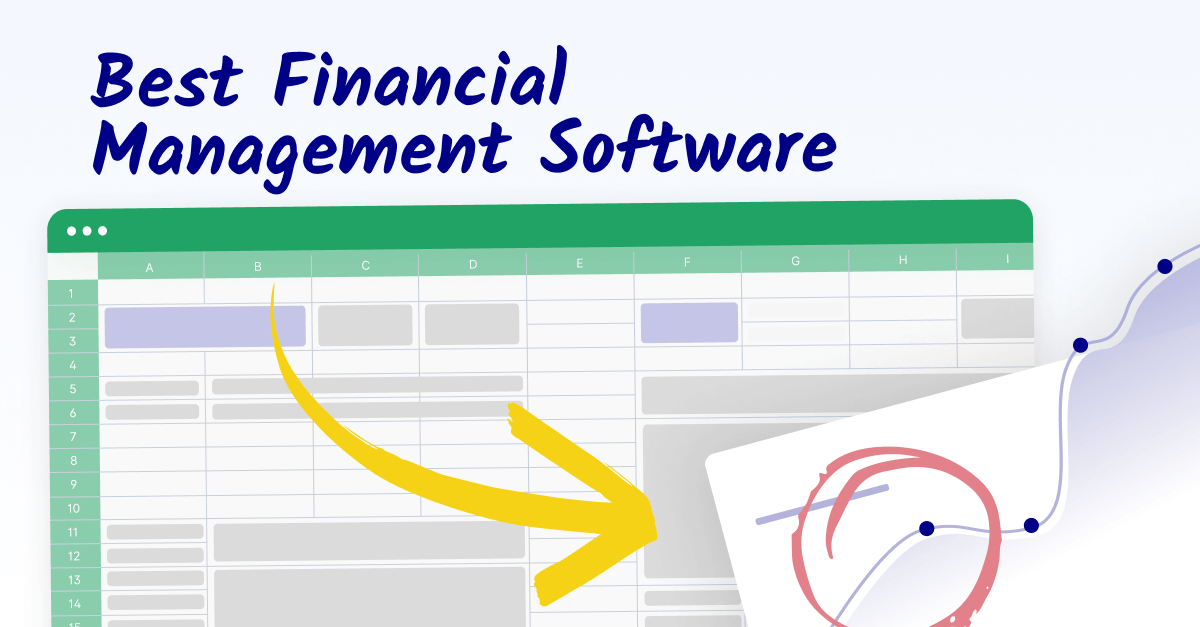What is workforce management?
Workforce management is the set of processes that helps a company efficiently manage its people, processes, and systems.
The benefit?
Smoother employee experiences, a more efficient People Operations team, and better compliance experience for everybody.
Workforce management includes the following sub-disciplines:
- Human resource management: The practice of hiring, managing, and retaining a company's employees.
- Talent management: How employers cultivate a productive workforce that's likely to stay with their organization for many years.
- Labor management: The practice of reporting and planning labor productivity.
- Field service management: The management of a company's resources employed at or en route to clients' property, rather than on company property.
- Leave management: The processes and policies of managing employee time-off requests, including vacation, holidays, sick leave, parental leave, and bereavement.
- Workforce analytics: The collection, analysis, and use of People Operations data to improve business decisions, processes, and policies.
- Workforce planning: The process of analyzing, forecasting, and planning workforce supply and demand, including gap assessment, to ensure an organization has the right people and skills in the right places to achieve its growth goals.
Why is workforce management important for CFOs?
CFOs—and the entire finance department—are close to a company's operations and headcount.
After all, employees and labor are one of a company's biggest expenses. So the Office of the CFO has a big investment in employee capital.
Workforce management also includes other matters of the purse, including payroll, leave, and demand forecasting.
For example, an FP&A analyst working on a cash flow projection needs the context of a labor forecast to refine their model, as extra employees require cash in the form of payroll.
What is an example of workforce management?
Workforce management takes different forms, but all of them are related to employee work, output, advancement, and retention.
Here are some common workforce management examples:
- Hiring new employees: Sourcing, interviewing, and securing an offer from new employees falls under the purview of workforce management.
- Refinding onboarding and offboarding processes: Onboarding and offboarding employees to ensure a smooth transition in and out of the company saves company dollars and makes employees more efficient at their job.
- Creating career advancement levels: Promoting employees and creating clear paths for their growth is one of the best strategies to retain employees. It's often better (and cheaper) to retain a top performer than it is to hire a new employee.
- Designing a competitive compensation package: There's often a bidding war for the best talent, and compensation packages, which include benefits, hours worked, time off, and cash compensation, are a huge factor in a candidate's decision to accept an offer. Likewise, employees looking to leave a company might think twice if their compensation at their current employer is unmatchable.
- Expanding operations: Creating new functions or product/service offerings or expanding a team of generalists into many teams of specialists all fall under workforce management and require a lot of investment from the FP&A team.
- Regulatory work to hire remote or foreign talent: Ensuring you comply with different territory and state laws to hire the best talent across geographic locations requires regular upkeep. Doubly so if you're looking to hire foreign talent or sponsor a worker's visa.
- Forecasting and allocating labor demands as the company grows: Knowing how many hires you can have—and saving some headcount spots as teams ask for them—is key for smart company growth.
What's the difference between workforce planning vs. headcount planning?
Workforce planning and headcount planning are similar.
But here's a helpful distinction:
Headcount planning is about determining whether the company has the right people in the right roles.
Workforce planning is about retaining the right employees and ensuring the business meets its future goals.
That said, the line between headcount planning and workforce planning can be blurry since they each inform the other.
What's the difference between workforce management and human capital management?
Workforce management is a subset of human capital management, although today the terms are close to interchangeable.
Human capital management (HCM) concerns employee labor and compensation.
Workforce management (WFM) concerns the fiscal side of the matter: budgeting and forecasting headcount, assigning work, scheduling shifts, tracking time and work, and providing payroll data.
What are workforce management software platforms?
Workforce management software platforms are comprehensive online systems that streamline and automate workforce scheduling, payroll, HR, and time-tracking processes.
Workforce management solutions reduce manual workloads and provide insights into an organization’s performance and labor costs. This allows organizations to maximize their resources while achieving long-term financial success.
Why use workforce management software?
Workforce management software helps companies save time and money with regard to workforce management tasks.
For example, it helps companies:
- Improve their demand and labor forecasting so that they always have important hires available at the right time
- Reduce the burden of government compliance, so the FP&A and legal teams can free up their time with other tasks
- Helps the People Ops and Finance departments improve their compensation and retention packages, reducing employee turnover and improving hiring efficiency
Among many other benefits.
How does workforce management software help with business growth?
Workforce management software helps business growth by empowering the FP&A team to create more accurate scenarios and models that allow for that growth given any number of variables.
Said another way: workforce management software helps the finance team create more plans. And those extra plans ensure there's always a path toward business growth.
As our CEO says, companies must plan, plan again, and plan again.
Is workforce management software only for enterprise companies?
Absolutely not. Companies of all sizes can use workforce management software.
That said, a growing company isn't ready for a beefy enterprise solution like Workday.
So it's important to choose a tool that fits your current needs and that will scale with you into the next phase of company growth.
What are the key features of workforce management tools?
Common features of workforce management software include:
Labor management
Labor management involves scheduling, shift planning, time and attendance tracking, and onboarding management.
Labor management tools help businesses ensure they have the right staff at the correct times while keeping track of labor costs and optimizing available resources. This can help reduce turnover and labor costs while improving customer service and productivity.
At a high level, better workforce management starts with efficiently scheduling employees.
Task management
Task management helps organizations set deadlines and priorities, track progress, promote collaboration, and measure and report the results.
Integrating task management into workforce management tools also includes budgeting tools allowing users to track specific project expenses.
Performance management
Performance management includes goal setting, performance tracking and evaluation, coaching, development planning, and feedback. It ensures that employees work to their full potential and meet their goals.
Performance management is also used to measure organizational changes that can impact team productivity. This allows managers to make well-informed decisions about the effectiveness of their strategy and its implementation.
Payroll systems
Payroll systems help employers process, track, and manage employee payments. Unlike manual payroll processes, automated payrolls simplify the payment process while reducing human error.
Payroll systems can also be integrated with other HR and finance software to help companies automate other accounting and financial planning & analysis processes.
Benefits of using workforce management software
Workforce management software improves productivity and profitability through the following:
Control costs associated with the workforce
Uniting your organization's workforce data helps you better control the cost of employment and operations.
Even better if your workforce management solution integrates with your favored analysis environment, like Excel, or lets you create custom reports that inform business leaders across the company.
Labor demand forecasting
WFM software provides real-time data and analytics on employee availability, productivity, and workload. It can then predict the number and types of employees an organization will need to meet its business goals on any given day.
For example, suppose a manager sees that certain employees consistently work overtime or that specific departments are consistently understaffed.
In that case, they can use this information to plan for future hiring or to adjust staff schedules to better meet the organization's needs.

Automated reporting
WFM systems generate automatic reports so businesses can access up-to-date and accurate insights into business performance and financial health.
These reports help businesses monitor employee hours worked, overtime costs, customer acquisition costs, customer satisfaction scores, customer loyalty and retention, and more.
These reports can then easily be shared with finance teams so they can accurately and quickly forecast, plan, and budget.
Easier payroll and HR management
HR teams can efficiently manage, train, and onboard staff when all their data is in one accessible system.
Built-in and robust analytics capabilities also help streamline processes like attendance, payroll, and performance evaluations.
Smoother onboarding and offboarding
Standardizing onboarding and offboarding means that employees feel set up for success and cared for when they leave.
Offboarding standardizing is also a manner of protecting the company, as employees with sensitive knowledge know exactly what they can and cannot share.
A standard onboarding process leads to higher productivity and better job satisfaction, so it's a good investment to reduce labor turnover.
Compliance
Government compliance is expensive and can demand weeks of your finance team's time that could be otherwise spent on planning, forecasting, budgeting, or analyzing.
But good workforce management software helps you prepare the necessary data you need to quickly complete your compliance obligations.
Contractor and freelancer management
Contractors and freelancers require different paperwork than full-time employees, and managing hours, payroll, and scopes of work for them can quickly blossom beyond your control.
So workforce management solution might be the answer.
You'll be able to onboard and offboard contractors and freelancers, manage their compensation, and manage contracts and scopes of work.
Best workforce management software solutions
The best workforce management software tools make it easier for companies to ensure employee productivity for improved financial health.
Which is the right workforce management software for you? Let’s start at the top.
1. Cube

Cube is the first spreadsheet-native FP&A platform that empowers finance teams to plan faster, more nimbly, and more scalably without changing how they work.
Our cloud-based FP&A software helps finance teams work more effectively by collecting and centralizing data into a single source of truth.
This empowers teams to create plans and reports based on that trusted data in the spreadsheets they know and love.
Cube transforms FP&A with a spreadsheet-native platform that offers fast, flexible, and scalable financial analysis for continuous collaboration and insights.
Many high-growth companies (like Masterworks and SmugMug) use Cube for all their FP&A needs, including workforce management.

Cube can integrate data from any source system, including accounting, finance, HR, sales, marketing, and business intelligence.
Cube makes it easier for companies to track, manage, and improve employee productivity and long-term financial success by creating a single source of truth.
Features:
- Automated data consolidation: Connect data from numerous sources to create a single source of truth that can be used to quickly create custom and ad hoc reports.
- Multi-scenario analysis: Allows you to model how changes to key assumptions affect overall outputs seamlessly.
- Endless integrations: Integrations for spreadsheets (Google and Excel), Accounting & Finance, HR, ATS, Billing & Operations, Sales & Marketing, and more.
- Customizable dashboards: Design, build, and share customizable reports across your organization without leaving Cube.
- Native Excel and Google Sheets integration: Compatible and bi-directional with any and all spreadsheets. We work with both, and many teams find Cube a powerful Google Sheets unlock, improving financial transparency across the organization.
- Keep your Excel models: Work how you work, only better. Cube doesn't replace your back end with proprietary formulas or add hidden columns to your reports.
- Multicurrency support: Evaluate your finances in your local and reporting currencies.
- User-based controls: User controls, validations, and an audit trail ensure that the right data goes to the right people at the right time.
- Dive in your data with drilldown: Ensure accurate reports by knowing where your data comes from, down to the individual cell. Get straight to the transactions and history behind a single data cell in just one click.
- Audit trail: Track and account for changes via this historical record to ensure your data stays clean
- Built-in roll-up logic: Easily aggregate values across time periods and other parameters with built-in formulas.
➡️ See all our features here.
Pros:
- Powerful reporting and KPIs help automate and analyze important data.
- Streamline manual data, reduce errors, and improve collaboration so you can make smarter business decisions in a fraction of the time.
- Integrates with dozens of applications and source systems.
- Proper, native Excel integration with all versions of Excel (no coding or formulas needed)
- Always reliable during sophisticated Excel calculations
- Standard implementation time that's 5x shorter than the competition
- Quick fresh and fetch times
- Intuitive, easy, and customizable reporting with self-explanatory formulas
- User-friendly user interface and controls
- Robust permission management to protect your data
- Has full Mac OS X compatibility
- Is an always-correct single source of truth
- Built and designed by a former serial CFO
Cons:
- Cube works best for mid-sized and commercial businesses–it’s not a personal finance app and not the best for Fortune 500 companies with trillions of rows.
- Cube is built for finance professionals and is not a solution for learning FP&A for the first time
- Pricing (below) is not designed for pre-series A startups
Integrations:
Cube integrates with almost everything. Here are our customers' most popular integrations:
- Spreadsheet: Microsoft Excel, Google Sheets
- Accounting & Finance: Acumatica, Deltek, JDEdwards, PeopleSoft, Microsoft Dynamics Suite, NetSuite, QuickBooks, Sage 50, 100, 300, Sage Intacct, Xero, Yardi
- HR/ATS: ADP, Bamboo HR, Bob/Hibob HRIS, ChartHop, Greenhouse, Gusto, Jazz HR, Justworks, Lever, Namely, Paychex, Paycom, Palocity, Rippling, Sapling, SAP SuccessFactors, Trinet, Workday, Zenefits
- Billing & Operations: Chargebee, Coupa, Ordway, SaasOptics, Zuora
- Sales & Marketing: HubSpot, Pipedrive, Salesforce
- Business Intelligence: Amazon Redshift, Google BigQuery, Hadoop, Looker, Microsoft Azure SQL, MongoDB, Oracle SQL, PowerBI, Snowflake, Tableau
Pricing:
See detailed pricing for customizable plans.
Start improving your workforce management with Cube.

2. Workday Adaptive Planning

Workday Adaptive Planning is a cloud-based financial planning solution for organizations to plan and predict future performance.
It offers specific solutions to cover financial planning, workforce planning, and sales planning. These financial tools promote collaboration across the enterprise without manual, error-prone spreadsheets or inflexible, clunky legacy systems.
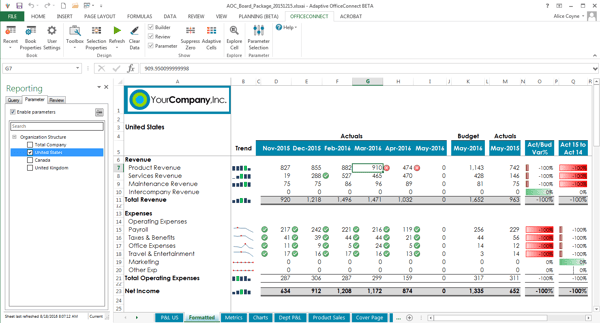
Adaptive Planning for finance is an enterprise performance management software solution.
Features & Benefits:
- Real-time reporting and insights
- Financial consolidation and reporting
- Automated forecasting and budgeting
- Customizable dashboards
- Multi-dimensional planning
Pricing:
Workday Adaptive Planning does not provide pricing information on its website, but various sources estimate that pricing starts at $15,000.
3. ADP Workforce Now
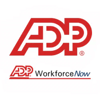
ADP Workforce Now is an HR platform for small to medium-sized businesses. ADP Workforce Now provides companies with a central system to streamline payroll, labor management, tax filing, analytics, and performance management.
The platform’s database enables data synchronization and integration with other HR and business applications. HR teams can utilize ADP Workforce Now to reduce administrative tasks.
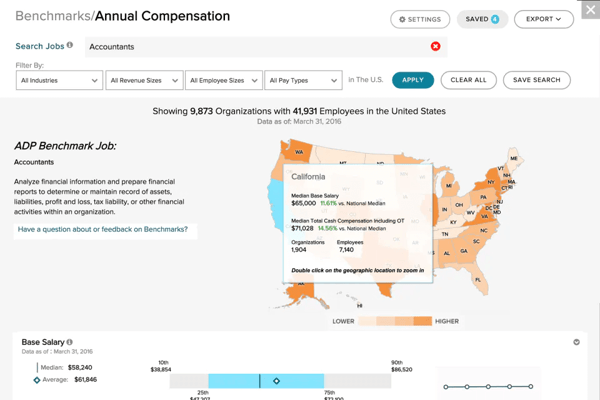
Features & Benefits:
- Employee background screening
- Peer/teammate feedback and review
- Digital direct deposits into workers’ account
- Creation and distribution of W-2 tax forms to employees
- Compliance and regulatory alerts
Pricing:
ADP Workforce Now offers three pricing levels:
- Essential
- Enhanced
- Complete
- HR Pro
Pricing is not available on the website but according to external sources, ADP Workforce Now starts from $62.00 per month.
4. Anaplan
.png?width=150&height=33&name=Anaplan_logo%20(1).png)
Anaplan is a cloud-based business planning and performance management platform for business departments such as sales, finance, HR, and operations.
It allows businesses to model, plan, forecast, and analyze data so companies can streamline operations, reduce costs, and monitor performance across multiple dimensions.
Anaplan is powered by a Hyperblock engine that drives collaboration and strategy.
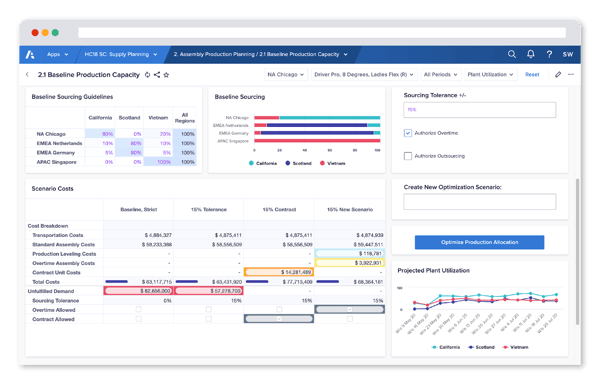
Features & Benefits:
- Reporting and analytics
- Multi-dimensional planning based on hierarchies
- Real-time modeling and calculation
- Central data repository
- Application cataloging
Pricing:
Anaplan offers three tiers of pricing:
- Basic
- Professional
- Enterprise
Though Anaplan does not share its pricing plans on its website, sources estimate between $30,000–$50,000 or higher depending on the scale of the project.
Also read: Anaplan vs Adaptive vs Planful vs Vena vs Datrails vs Cube
5. SAP Success Factors

SAP SuccessFactors HXM Suite is a Human Experience Management (HXM) solution that helps organizations with employee productivity throughout their entire workforce.
SAP Human Capital Management solutions help companies become more agile, flexible, and resilient by improving the employee experience that covers core HR processes such as payrolls, time management, and talent management. SAP SuccessFactors automates manual tasks through its cloud-based system so that businesses can focus on other activities.
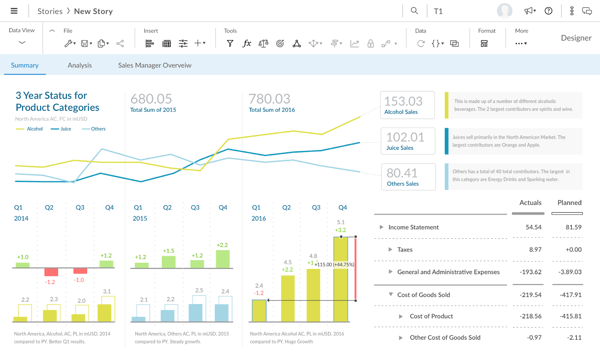
Features & Benefits:
- Employee experience management
- HR and payroll
- Talent management
- HR analytics
- Workforce planning
Pricing:
According to various sources, SAP Success Factors' starting price is estimated at $85 annually.
Did you know?
Cube integrates with SAP SuccessFactors. So you can use both tools for their strengths: SAP Success Factors handles HR, payroll, and experience management, but Cube helps your FP&A team do the core workforce planning analysis.
6. Projectworks

Projectworks is a cloud-based project management software that helps businesses manage an entire project lifecycle from ideation to finish. HR teams can monitor employees and contractors with timesheets, and finance teams can track costs, revenue, forecast, and compare budgets and invoices.
Projectworks allows administrators to customize and configure the portal to meet their needs. The platform integrates with other applications such as Xero and Quickbooks.
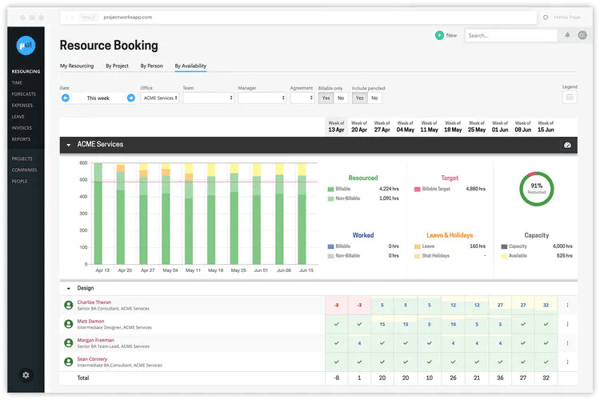
Features & Benefits:
- Communication management
- Risk assessment and management
- Resource allocation
- Progress tracking
- Quality assurance
Pricing:
Projectworks offers 3 ways to build a project:
- Budget level – Fee-based pricing
- Timecode level – Fee-based pricing
- Timecode level – Hourly-based pricing (hours x rate)
However, exact pricing is only available upon request.

7. NetSuite

NetSuite is a cloud accounting software that automates supplier invoice payment and processing. It automatically streamlines business processes such as account reconciliation, approvals, and transaction matching.
NetSuite offers a comprehensive system consisting of ERP, HR, inventory management, CRM, supply chain management, and more. It provides real-time business insights at a click of a button and uses business intelligence to help with forecasting and scenario planning.
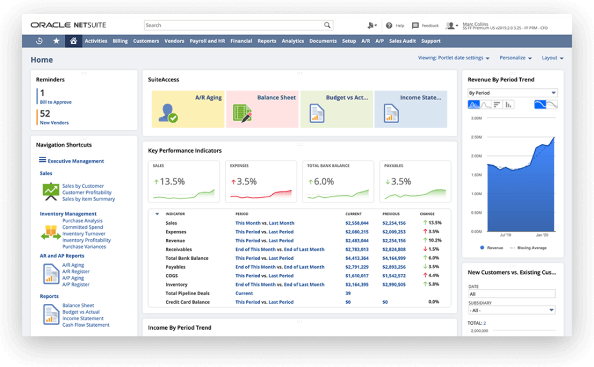
Features & Benefits:
- Inventory and order management
- Analytics and reporting
- Manufacturing and supply chain management
- Data integration
- Time and expense tracking
Pricing:
Although NetSuite does not list its pricing, reviews show that a NetSuite license includes a $999/month fee and an additional $99/month fee for each user.
Did you know?
Cube integrates with NetSuite. In fact, this is one of our most popular connections among customers. Our customers use their Cube and NetSuite integration in myriad ways, but most commonly they bring their NetSuite data into Cube, which sits in Excel. They pull their NetSuite data, through Cube, into Excel, and use Cube to speed up their analysis and reporting.
8. Sage Intacct

Sage Intacct is a cloud-based solution that offers companies automation, financial reporting, and operational insights. It supports time and expense management, revenue management, and project accounting functions.
Sage Intacct offers integration capabilities with different systems, such as CRM, payroll, POS, and ERP. Various industries, including SaaS, financial services, wholesale distribution, and nonprofits can use it.
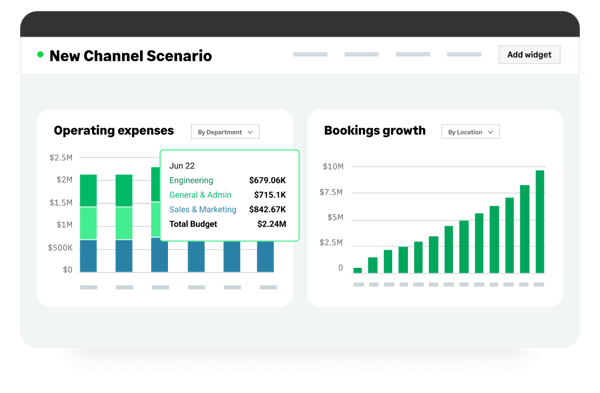
Features & Benefits:
- Audit trails
- Expense tracking
- Billing and invoicing
- Compliance management
- Consolidation/roll-up
Pricing:
Sage Intacct does not publicly disclose pricing information on its website. But sources suggest pricing varies between $15,000 and $60,000 depending on the specific needs of the individual or organization.
Did you know?
Cube integrates with Sage Intacct. Most customers use Cube as a conduit and organizer to get their Sage Intacct data into Excel, where they can analyze it. Why use Cube? Because Cube organizes and cleanses your data for you, meaning that the chance for human error is nearly zero. Likewise, with Cube you can create endless scenarios, so it accelerates your scenario planning and workforce planning tasks.
9. Oracle HCM Cloud
.jpeg?width=150&height=88&name=Oracle_Cloud_logo-600x350%20(1).jpeg)
Oracle HCM Cloud is a complete WFM solution that connects human resource processes, including talent management, strategic workforce planning, workforce health and safety incidents, recruiting, benefits management, and more.
Oracle HCM is an all-in-one platform for all HR functionalities. It operates as a natively-built SaaS application that offers users a tailored user experience and multi-layered data security and privacy.
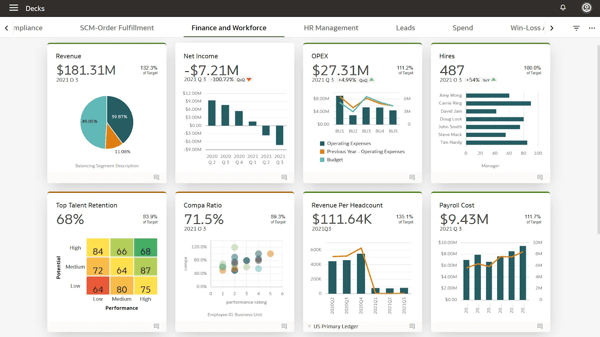
Features & Benefits:
- Applicant tracking
- Benefits management
- Employee onboarding
- Vacation and leave tracking
- Payroll management
Pricing:
- Help desk: $4.00 per employee per month
- Talent management: $10.00 per employee per month
- Global HR: $15.00 per employee per month
10. Rippling

Rippling is a central repository for HR, IT, and finance departments. It aggregates workforce management processes that could’ve been siloed and enables teams to work and communicate with each other.
Rippling offers automated payroll, benefits, and expense services that allow companies to digitize employee lifecycles in a single system. Businesses can onboard global employees and easily set up benefits, accounts, and necessary third-party apps.
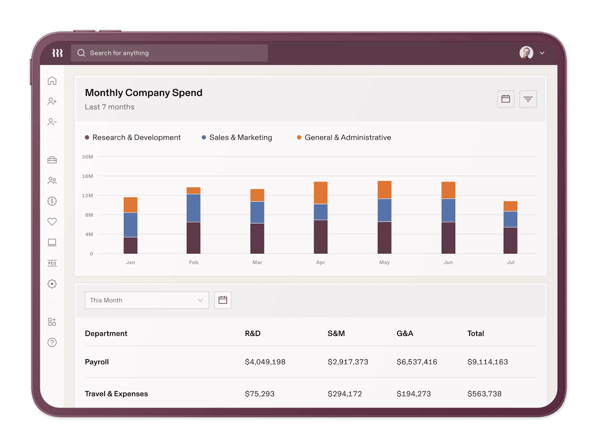
Features & Benefits:
- Payroll and benefits management
- Third-party integrations and APIs
- Employee single sign-on systems
- Time, attendance, and PTO
- Employee onboarding
Pricing:
According to info on Rippling’s website, pricing starts at $8 per user.
11. UKG

UKG is a collection of cloud HR tools on a unified platform that streamlines HR processes. UKG provides a visual interface for HR teams to handle stages from pre-hire to retirement.
UKG offers an interface that allows users to manage and track candidates and their data. The software also provides tools for managing payroll, benefits, performance reviews, scheduling, etc.
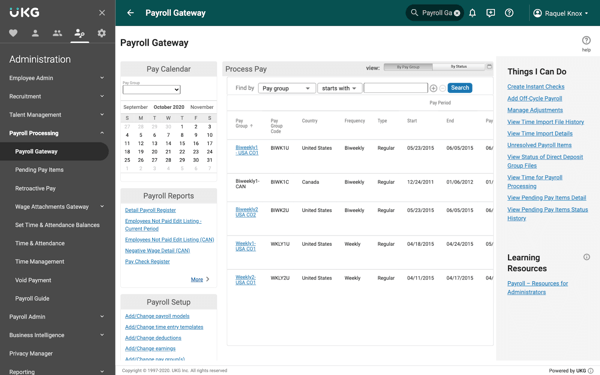
Features & Benefits:
- Comprehensive, unified HR platform
- Automated payroll processing
- Robust analytics and reporting tools
- Employee self-service portal
- Real-time scheduling
Pricing:
According to sources, UKG’s pricing model is per-employee-per-month, costing between $26-37 per employee per month. UKG also charges an implementation fee of 30-40% of the annual software fees.
Businesses looking to use UKG should contact UKG for a custom quote.
The power of workforce analytics in data-driven decision-making
By leveraging workforce analytics, organizations can convert raw data into actionable insights, empowering them to make informed decisions, enhance performance, and cultivate a highly engaged and productive workforce.
Proactive Retention Strategies
By scrutinizing workforce data, organizations can identify trends related to employee turnover. For instance, analytics may reveal common factors contributing to attrition, such as dissatisfaction with work-life balance or limited growth opportunities.
Armed with this knowledge, HR teams can develop targeted retention strategies, such as offering flexible work arrangements or career development programs, to mitigate turnover and retain top talent.
Enhancing Performance Management
Workforce analytics can provide valuable insights into employee performance trends and areas for improvement. For example, analyzing performance evaluation data may uncover patterns indicating specific skill gaps or training needs among certain teams or departments.
With this insight in hand, managers can customize training programs or coaching sessions to target identified areas of weakness, nurturing continuous improvement and professional growth.
Promoting Employee Engagement
Employee survey data can offer invaluable insights into employee sentiment, satisfaction levels, and engagement drivers. By identifying common pain points such as communication breakdowns, organizations can implement targeted initiatives like improving channels or introducing recognition programs, thereby fostering a positive work culture.
Future trends and innovations in workforce management software
Staying updated on emerging trends and innovations in this field is vital for organizations aiming to stay competitive and optimize workforce efficiency. Here are some key future trends influencing the landscape of workforce management software:
AI-Driven Scheduling: Artificial Intelligence (AI) is transforming scheduling in organizations. AI algorithms analyze employee preferences, skills, availability, and historical data to generate schedules that meet business goals, reduce costs, and enhance employee satisfaction. By harnessing AI, organizations can create schedules that are flexible, efficient, and adaptable to evolving business requirements.
Employee Self-Service: Employee self-service portals are becoming increasingly prevalent in workforce management solutions. Self-service portals empower employees to control scheduling, time-off requests, and shift swaps independently. By granting autonomy, these portals boost engagement, satisfaction, and work-life balance.
Predictive Analytics: Predictive analytics, powered by data analysis and machine learning, forecasts workforce trends, identifies staffing gaps, and aids in proactive workforce management. It enables data-driven decision-making and optimizes workforce planning.
Mobile Workforce Management: With mobile devices and remote work on the rise, mobile workforce management is crucial in workforce software. Mobile apps enable tasks like clocking in/out, viewing schedules, requesting time off, and communicating with managers anywhere, boosting productivity and enabling effective management of dispersed teams.
Workforce Wellbeing Solutions: Integrating wellness programs and resources into workforce management software to support employee health, mental wellbeing, and overall satisfaction, promoting a positive workplace culture and reducing absenteeism.
Conclusion: Improve your workforce management
For successful workforce management and improved financial health, businesses need software that combines finance, sales, marketing, and HR functionalities.
Enter Cube.
Cube is an all-in-one FP&A software that makes it easy to plan and execute your projects on time with advanced analytics and reporting capabilities.
Gone are the days of grappling with the complexities of transitioning to a new platform. Cube effortlessly integrates with Excel and Google Sheets, ensuring WFM and finance teams can unearth invaluable insights within a mere two weeks of implementation.
Say goodbye to clunky, outdated WFM solutions.
Upgrade to Cube and streamline your workforce management today.



.png)




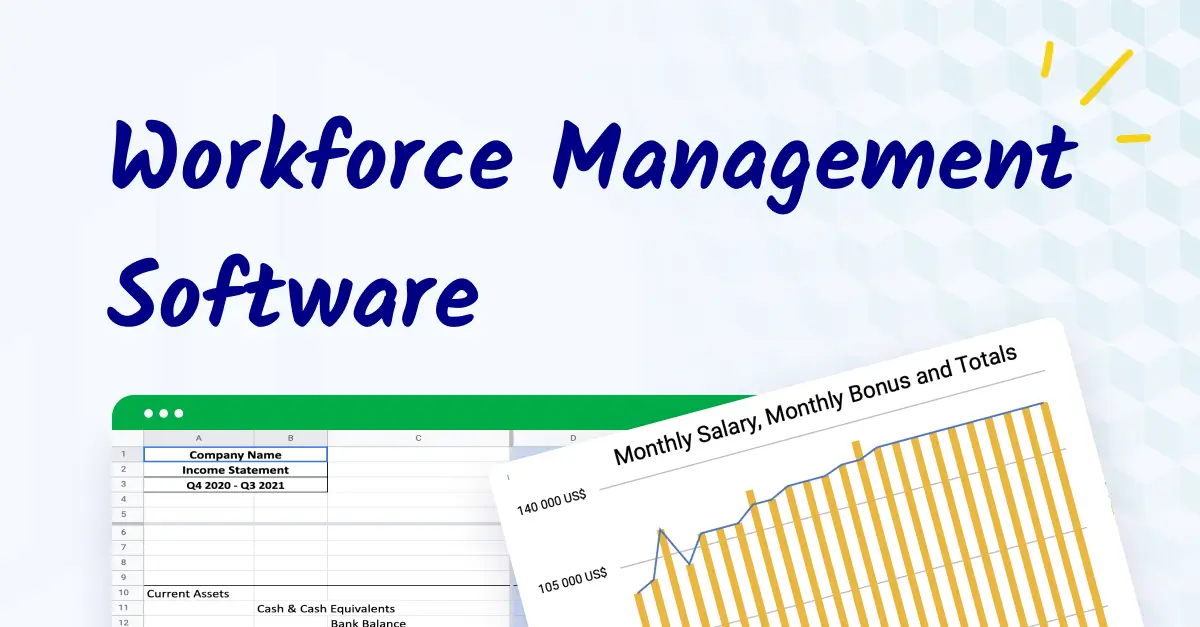













.jpeg?width=150&height=88&name=Oracle_Cloud_logo-600x350%20(1).jpeg)






![15 of the best workforce planning software tools [2025]](https://www.cubesoftware.com/hubfs/workforce%20planning-1.png)
![16 best cash flow management software tools [2025]](https://www.cubesoftware.com/hubfs/Cash-Flow%20%281%29.webp)
